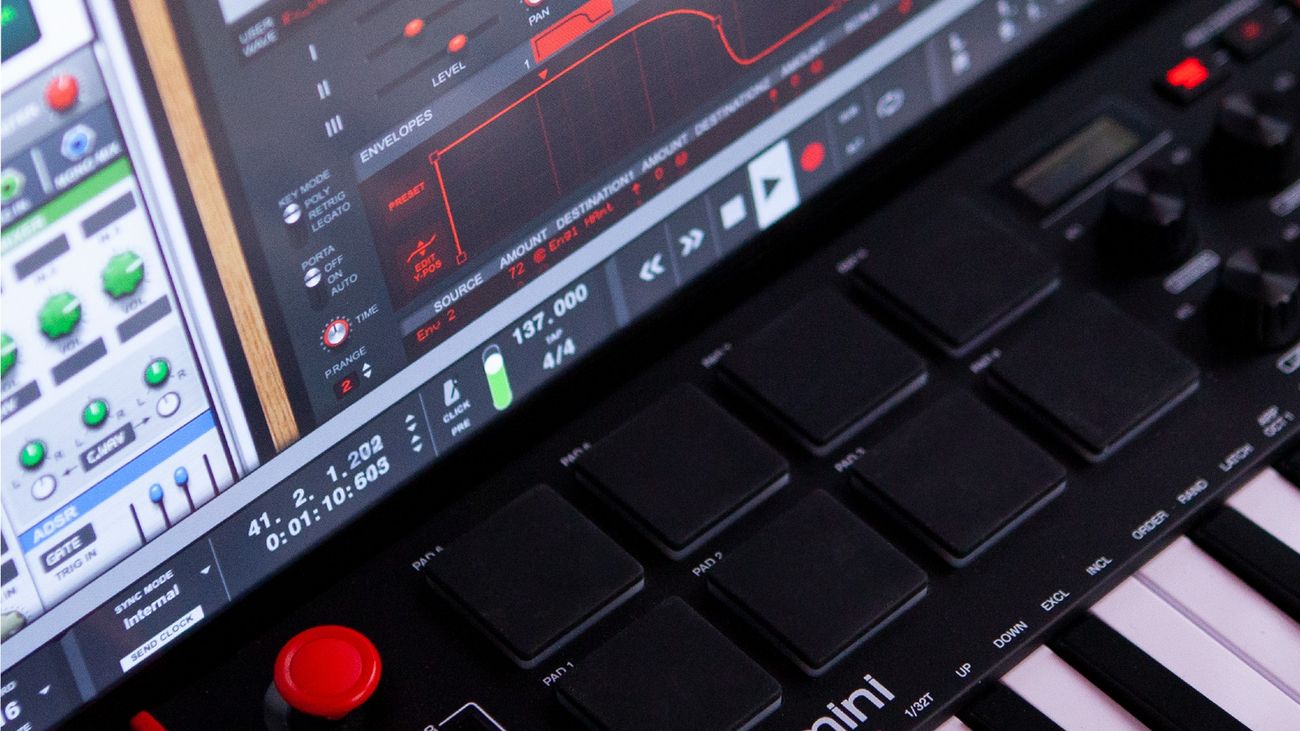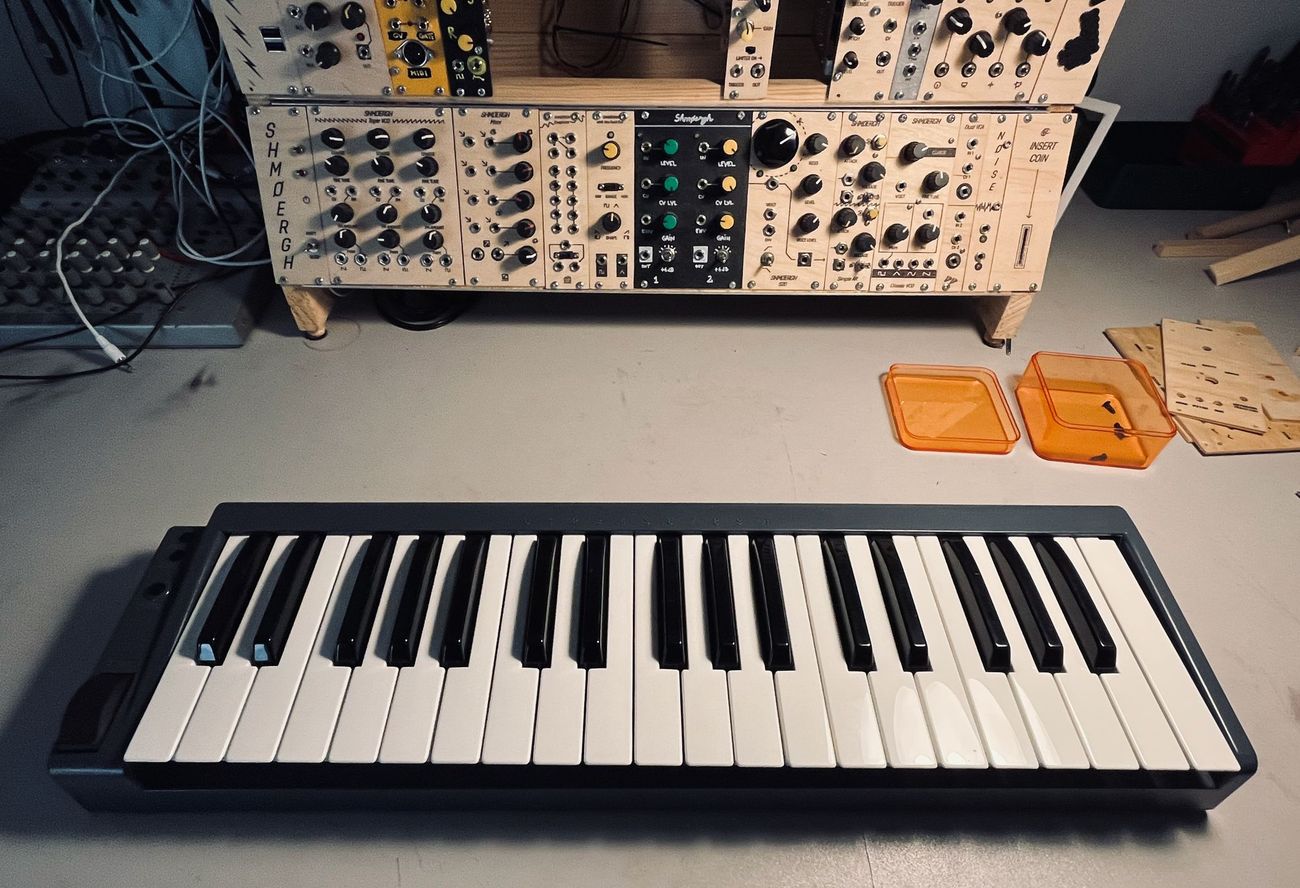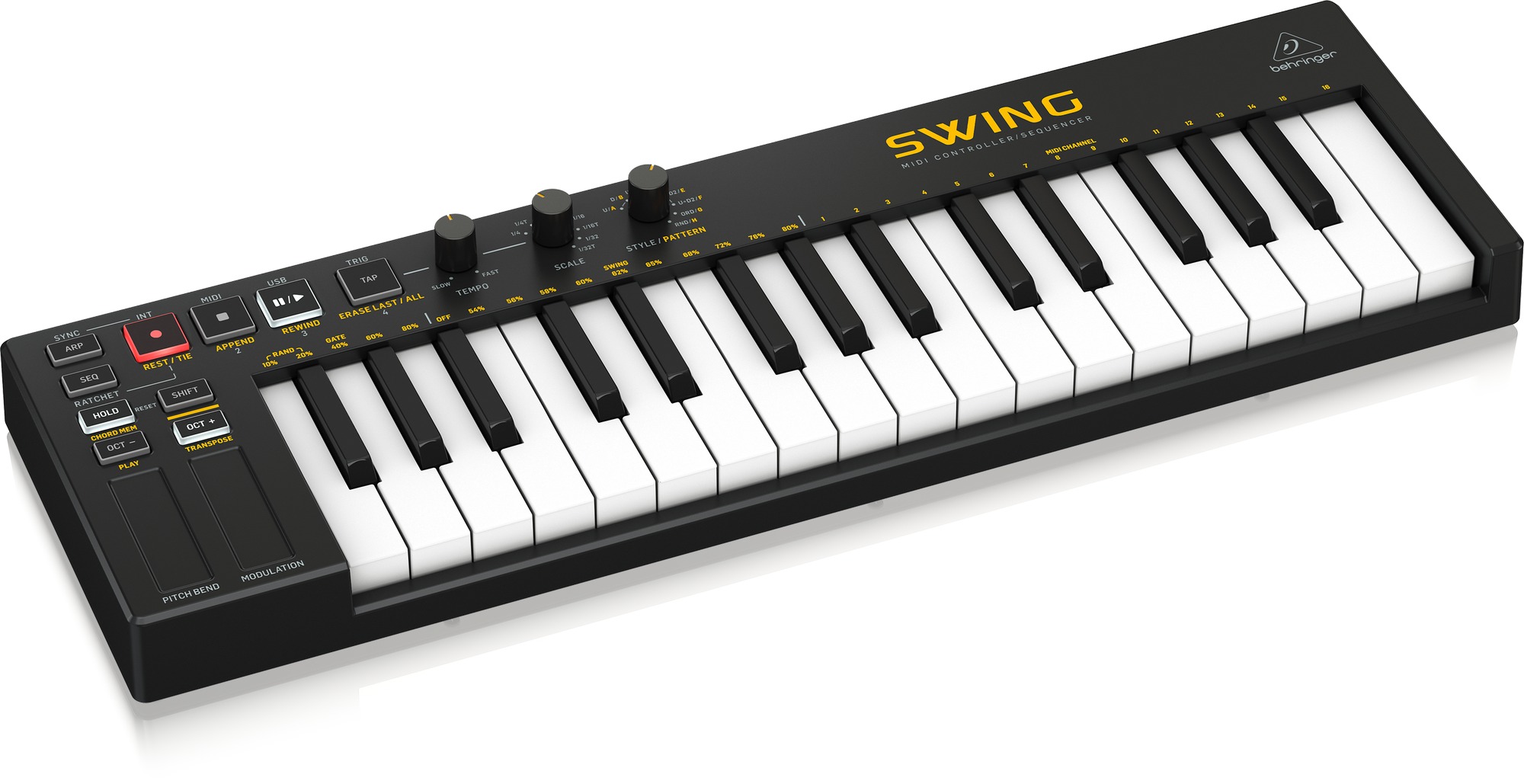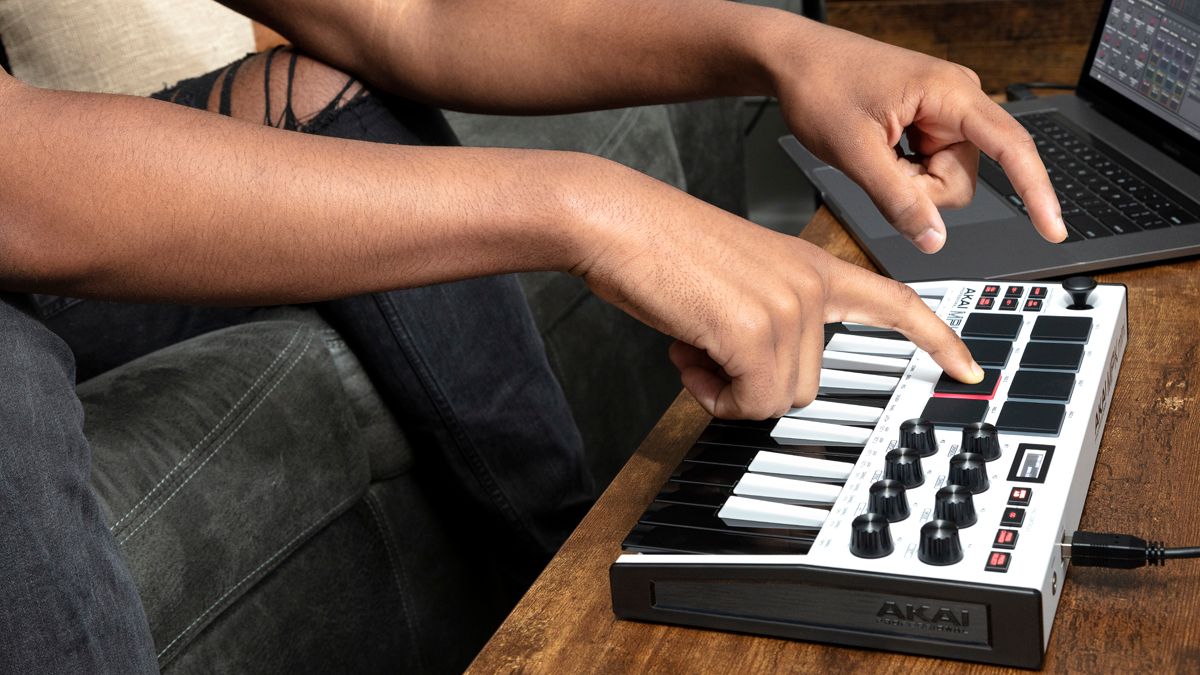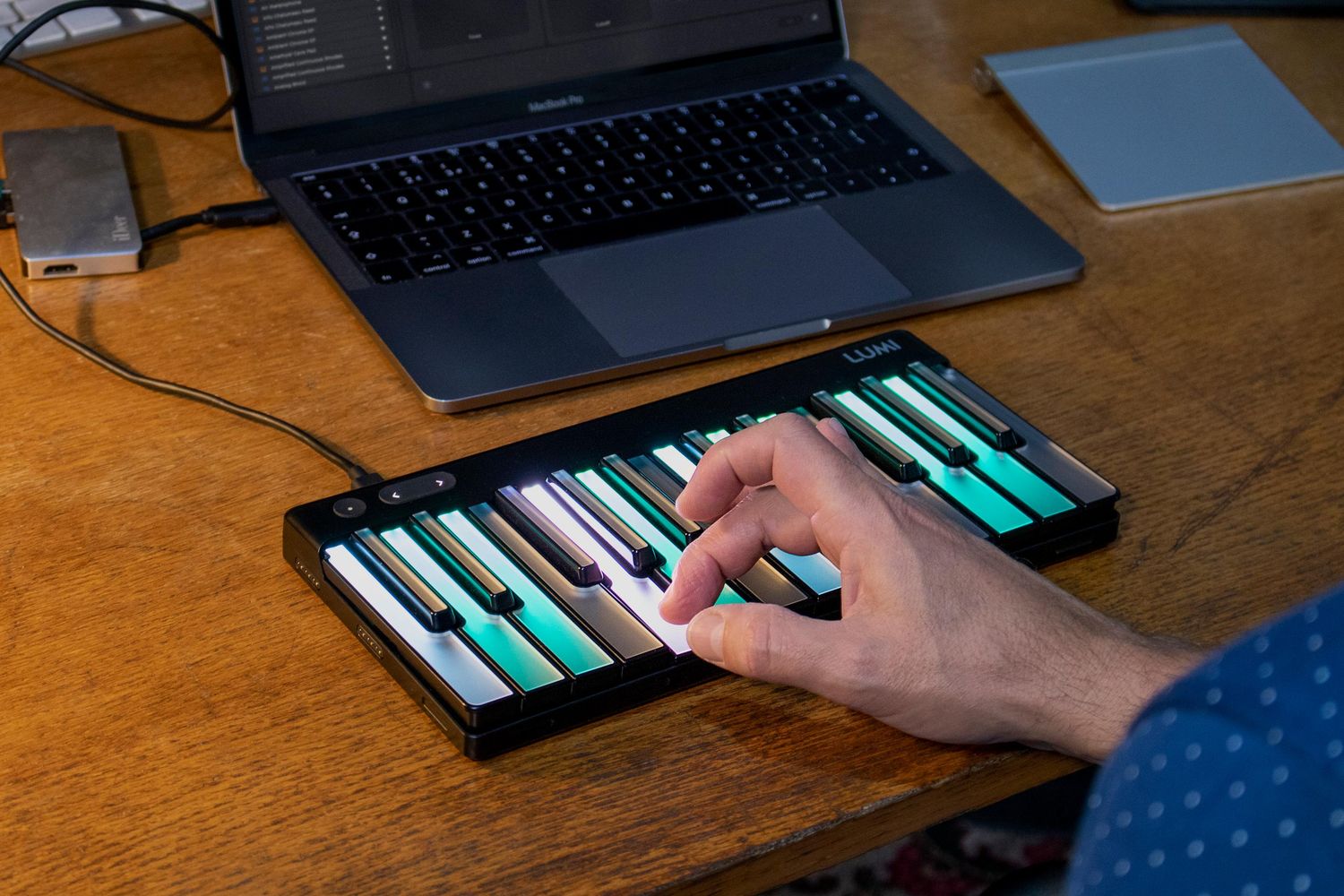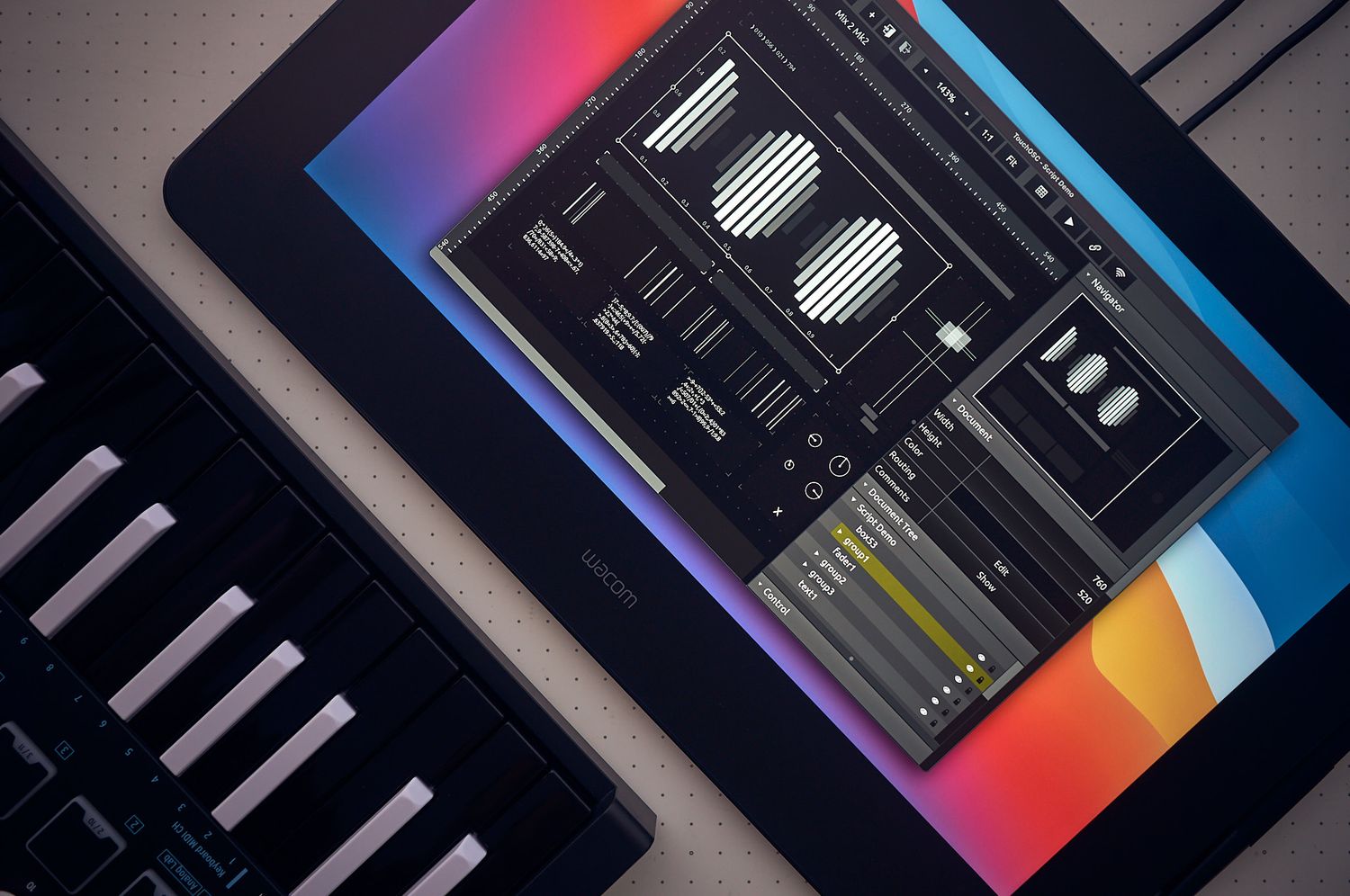Home>Production & Technology>MIDI>How To MIDI With Keyboard On ProTools
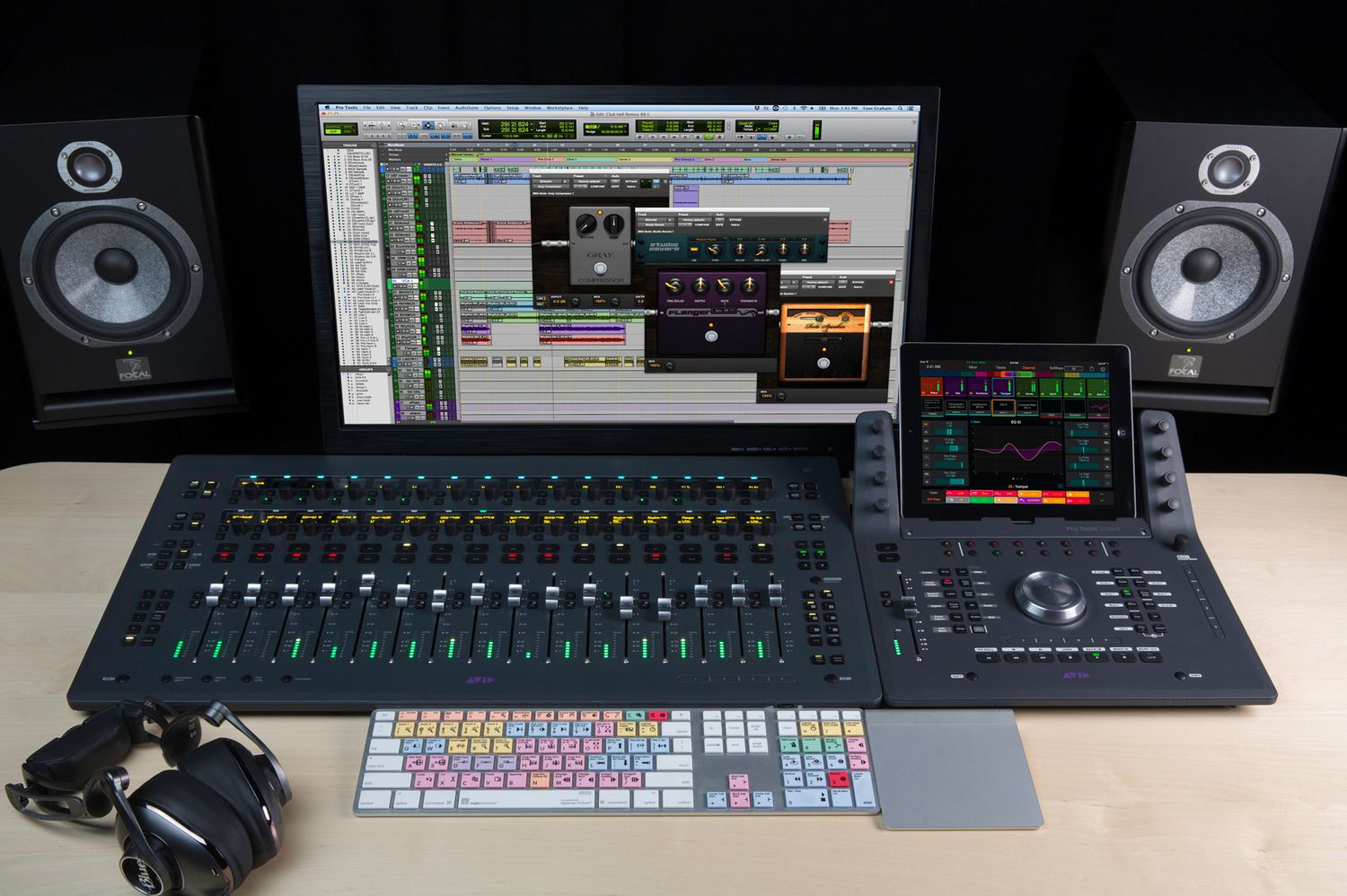

MIDI
How To MIDI With Keyboard On ProTools
Modified: February 22, 2024
Learn how to use MIDI with your keyboard on ProTools. Discover essential tips and techniques for seamless MIDI integration. Master the art of MIDI with our expert guide.
(Many of the links in this article redirect to a specific reviewed product. Your purchase of these products through affiliate links helps to generate commission for AudioLover.com, at no extra cost. Learn more)
Table of Contents
Introduction
MIDI, which stands for Musical Instrument Digital Interface, is a versatile and powerful tool that has revolutionized the way music is created, recorded, and produced. It enables seamless communication between musical instruments, computers, and various audio devices, allowing musicians and producers to unleash their creativity in unprecedented ways.
In the world of digital music production, MIDI has become an indispensable asset, providing a standardized language for electronic musical instruments to communicate with each other and with computers. Whether you're a seasoned music producer, an aspiring artist, or a hobbyist musician, understanding how to MIDI with a keyboard on ProTools can significantly enhance your music production workflow.
By harnessing the capabilities of MIDI, you can effortlessly capture the nuances of your musical performance, manipulate notes and rhythms with precision, and explore a vast array of virtual instruments and soundscapes. The integration of MIDI with ProTools, a leading digital audio workstation (DAW) used by professionals worldwide, unlocks a realm of creative possibilities, enabling you to bring your musical ideas to life with unparalleled flexibility and control.
Throughout this comprehensive guide, we will delve into the intricacies of setting up a MIDI connection, configuring ProTools for MIDI input, recording MIDI with a keyboard, editing MIDI notes, and leveraging MIDI with virtual instruments. By the end of this journey, you will gain a deeper understanding of how MIDI and ProTools work in harmony, empowering you to elevate your music production endeavors to new heights.
Setting up MIDI connection
Setting up a MIDI connection between your keyboard and ProTools is the fundamental first step to unlock the boundless potential of MIDI in your music production endeavors. By establishing a seamless link between your physical keyboard and the digital realm of ProTools, you pave the way for capturing expressive performances, manipulating musical data, and exploring a myriad of sonic possibilities.
To initiate the MIDI connection, you will need a MIDI keyboard/controller equipped with MIDI Out ports and a MIDI interface or a USB MIDI interface. The MIDI Out port of your keyboard will be connected to the MIDI In port of the MIDI interface using standard MIDI cables. If your keyboard features a USB MIDI interface, you can directly connect it to your computer via a USB cable.
Once the physical connections are in place, it's time to ensure that ProTools recognizes and communicates with your MIDI keyboard. In ProTools, navigate to the 'Setup' menu and select 'MIDI'. Here, you can configure the MIDI input settings to recognize your MIDI interface or USB MIDI interface. ProTools provides a straightforward interface for managing MIDI devices, allowing you to specify the input and output ports for MIDI communication.
After configuring the MIDI input settings in ProTools, it's essential to verify that the MIDI signal is being received from your keyboard. You can do this by selecting a MIDI track in ProTools, arming it for recording, and playing the keys on your MIDI keyboard. If everything is set up correctly, you should see MIDI activity indicated on the track, confirming that ProTools is successfully receiving MIDI data from your keyboard.
In some cases, you may need to install specific drivers or software provided by the manufacturer of your MIDI interface or USB MIDI interface to ensure seamless communication between your keyboard and ProTools. These drivers facilitate the integration of your MIDI hardware with your computer's operating system, enabling efficient data transfer and MIDI signal recognition within ProTools.
By meticulously setting up the MIDI connection between your keyboard and ProTools, you establish a direct pathway for musical expression and creativity to flow seamlessly into the digital realm. With the MIDI link established, you are now ready to delve into the captivating realm of MIDI-based music production within the innovative environment of ProTools.
Configuring ProTools for MIDI input
Configuring ProTools for MIDI input is a pivotal step in harnessing the full potential of MIDI within this renowned digital audio workstation. By fine-tuning the MIDI input settings, you can ensure seamless communication between your MIDI keyboard and ProTools, laying the groundwork for capturing expressive performances and unleashing a world of creative possibilities.
To embark on the journey of configuring ProTools for MIDI input, begin by accessing the 'Setup' menu within ProTools. Here, you will find the 'MIDI' settings, which serve as the gateway to integrating your MIDI keyboard with the software. Within the MIDI settings, you can specify the MIDI input device that ProTools should recognize. This is where you can select your MIDI interface or USB MIDI interface, allowing ProTools to establish a direct line of communication with your keyboard.
Once the MIDI input device is selected, you have the flexibility to designate the MIDI input port that corresponds to your keyboard. This granular level of control enables you to pinpoint the exact source of MIDI data, ensuring that ProTools accurately captures the musical nuances emanating from your keyboard. Additionally, ProTools allows you to specify the MIDI input channel, providing further customization to accommodate the specific configuration of your MIDI keyboard.
Furthermore, ProTools offers the ability to enable or disable MIDI Thru, a feature that determines whether MIDI input signals are simultaneously routed through to the MIDI output. This feature can be particularly useful in certain production scenarios, offering flexibility in how MIDI data is processed and distributed within the software environment.
In the realm of MIDI input configuration, ProTools stands as a versatile platform that empowers musicians and producers to tailor the software to their unique hardware setups and creative preferences. By delving into the MIDI settings within ProTools, you gain the capability to fine-tune the communication between your MIDI keyboard and the software, ensuring that your musical performances are accurately captured and translated into the digital domain.
With ProTools finely configured for MIDI input, you are poised to embark on a musical journey where your MIDI keyboard becomes an intuitive extension of your creative expression, seamlessly integrated with the powerful capabilities of ProTools. This harmonious integration sets the stage for capturing inspired performances, manipulating MIDI data with precision, and exploring a rich tapestry of musical possibilities within the captivating realm of MIDI-based music production.
Recording MIDI with keyboard
Recording MIDI with a keyboard in ProTools opens a gateway to capturing the essence of musical expression with unparalleled precision and flexibility. Whether you're laying down intricate melodies, crafting intricate chord progressions, or infusing your compositions with dynamic rhythms, the process of recording MIDI with a keyboard in ProTools empowers you to translate your musical ideas into a digital canvas with seamless fluidity.
To initiate the process of recording MIDI with your keyboard in ProTools, you begin by creating a new MIDI track within the software. This track serves as the virtual canvas where your musical performance will be captured in the form of MIDI data, preserving the subtleties of your playing and providing a foundation for further manipulation and exploration.
Once the MIDI track is created, you can specify the MIDI input source as your keyboard, ensuring that ProTools is poised to receive the musical signals emanating from your instrument. By designating the MIDI input source, you establish a direct link between your keyboard and the MIDI track, setting the stage for seamless communication and data capture.
With the MIDI track armed for recording, you are ready to embark on a musical journey, translating your artistic vision into tangible digital form. As you play your keyboard, the MIDI track in ProTools dutifully captures every nuance of your performance, preserving the intricacies of your playing style, dynamics, and musical expression.
The beauty of recording MIDI with a keyboard in ProTools lies in its ability to faithfully capture the nuances of your performance, empowering you to revisit and refine your musical ideas with unparalleled flexibility. Whether you're crafting intricate melodies, experimenting with harmonies, or sculpting rhythmic patterns, the MIDI data captured in ProTools serves as a malleable foundation for creative exploration and refinement.
As your musical performance unfolds, ProTools diligently records the MIDI data, encapsulating the essence of your creative expression with precision and fidelity. The resulting MIDI data can be further manipulated, edited, and refined within ProTools, offering a wealth of creative possibilities for shaping your musical compositions with finesse and ingenuity.
In essence, the process of recording MIDI with a keyboard in ProTools transcends mere data capture; it embodies the art of preserving musical expression in its purest form, empowering you to breathe life into your compositions with a level of control and finesse that is truly transformative. With each keystroke and musical gesture, your keyboard becomes a conduit for artistic expression, seamlessly integrated with the boundless capabilities of ProTools to bring your musical visions to fruition.
In the realm of MIDI-based music production, the process of recording MIDI with a keyboard in ProTools stands as a testament to the seamless fusion of musical artistry and technological innovation, where the boundaries between analog expression and digital manipulation dissolve, giving rise to a harmonious symphony of creativity and possibility.
Editing MIDI notes in ProTools
Editing MIDI notes in ProTools empowers music producers and composers with a wealth of creative tools to refine and sculpt their musical compositions with precision and finesse. Whether you're fine-tuning melodic phrases, adjusting rhythmic patterns, or exploring harmonic variations, the process of editing MIDI notes within ProTools offers a captivating journey of musical refinement and artistic exploration.
Upon capturing a musical performance as MIDI data in ProTools, the stage is set for delving into the intricate realm of MIDI note editing. With the MIDI track containing the recorded performance at your fingertips, you can seamlessly navigate to the MIDI Editor within ProTools, a versatile workspace where musical ideas are transformed and refined with meticulous detail.
Within the MIDI Editor, you are presented with a visual representation of the MIDI notes comprising your performance, each note serving as a musical building block that can be manipulated and shaped to suit your creative vision. The user-friendly interface of the MIDI Editor provides intuitive tools for adjusting note lengths, modifying velocities, and refining the timing of individual notes, allowing you to breathe life into your compositions with unrivaled control.
One of the fundamental aspects of editing MIDI notes in ProTools is the ability to quantize note timing, a feature that aligns the rhythmic elements of your performance to a specified grid, enhancing the overall precision and coherence of your musical phrases. By applying quantization, you can effortlessly refine the rhythmic feel of your compositions, ensuring that every note aligns with the desired rhythmic structure with seamless accuracy.
Furthermore, ProTools offers a myriad of editing capabilities, including the manipulation of note velocities to imbue your performances with dynamic expression, the adjustment of note lengths to craft nuanced phrasing, and the seamless transposition of notes to explore harmonic variations and melodic transformations. These editing tools serve as a palette for creative exploration, enabling you to sculpt your musical ideas with finesse and ingenuity.
In addition to individual note editing, ProTools provides comprehensive functionalities for editing MIDI data at a macro level, allowing you to manipulate entire sections of your performance with ease. Whether you're refining the structure of a musical passage, exploring variations in chord voicings, or crafting intricate arpeggiations, the editing capabilities within ProTools empower you to shape your compositions with artistic precision and creative freedom.
As you navigate the captivating landscape of editing MIDI notes in ProTools, you are immersed in a realm where musical ideas are transformed, refined, and elevated with unparalleled flexibility and control. The process of editing MIDI notes transcends mere manipulation; it embodies the art of sculpting musical expression, breathing life into compositions with a level of artistry and finesse that is truly transformative.
In essence, the journey of editing MIDI notes in ProTools stands as a testament to the seamless fusion of musical artistry and technological innovation, where the boundaries between musical expression and digital manipulation dissolve, giving rise to a harmonious symphony of creativity and possibility. With each edit and refinement, your compositions evolve into vibrant tapestries of musical expression, seamlessly integrated with the boundless capabilities of ProTools to bring your artistic visions to fruition.
Using MIDI with virtual instruments
Harnessing the power of MIDI with virtual instruments within ProTools unlocks a realm of sonic exploration and creative expression that transcends the boundaries of traditional music production. By seamlessly integrating MIDI with virtual instruments, music producers and composers can delve into a rich tapestry of sounds, textures, and timbres, expanding their sonic palette with unprecedented versatility and depth.
In the realm of MIDI-based music production, virtual instruments stand as digital embodiments of musical creativity, offering a diverse array of expressive sounds that can be manipulated and molded through the nuanced control of MIDI data. Within ProTools, the integration of MIDI with virtual instruments is a seamless process that empowers musicians to breathe life into their compositions with an expansive sonic landscape at their fingertips.
To embark on the journey of using MIDI with virtual instruments in ProTools, you begin by selecting a virtual instrument plugin within the software. ProTools boasts a comprehensive array of virtual instruments, ranging from classic synthesizers and samplers to intricately sampled orchestral libraries and cutting-edge sonic sculpting tools. Once the virtual instrument is selected, you can create a new MIDI track within ProTools, designating the virtual instrument as the MIDI output destination.
With the MIDI track armed for recording and the virtual instrument poised to receive MIDI input, you are ready to unleash your creative vision. As you play your MIDI keyboard, the virtual instrument within ProTools dutifully responds to the MIDI data, translating your musical gestures into evocative sounds and textures. Whether you're crafting lush orchestral arrangements, sculpting intricate electronic textures, or exploring the depths of synthesized soundscapes, the integration of MIDI with virtual instruments empowers you to shape your compositions with boundless creativity and sonic depth.
Furthermore, the marriage of MIDI and virtual instruments within ProTools offers a wealth of creative possibilities for real-time performance and improvisation. As you interact with your MIDI keyboard, the virtual instrument becomes a responsive conduit for musical expression, capturing the nuances of your playing and transforming them into dynamic sonic articulations in real time. This seamless interaction between MIDI and virtual instruments fosters a symbiotic relationship between the performer and the sonic canvas, allowing for intuitive exploration and spontaneous musical discovery.
In essence, the process of using MIDI with virtual instruments in ProTools embodies the seamless fusion of musical artistry and technological innovation, where the boundaries between analog expression and digital manipulation dissolve, giving rise to a harmonious symphony of creativity and sonic possibility. With each keystroke and musical gesture, your MIDI keyboard becomes a gateway to a boundless sonic realm, seamlessly integrated with the expressive capabilities of virtual instruments within ProTools to bring your musical visions to life with unparalleled depth and creativity.
Conclusion
In the realm of music production, the fusion of MIDI and ProTools transcends mere technical integration; it embodies a harmonious synergy between artistic expression and technological innovation. Throughout this journey, we have explored the intricacies of MIDI integration with ProTools, delving into the processes of setting up MIDI connections, configuring ProTools for MIDI input, recording MIDI with a keyboard, editing MIDI notes, and leveraging the boundless capabilities of MIDI with virtual instruments. As we draw the curtain on this exploration, it becomes evident that the marriage of MIDI and ProTools heralds a new era of creative possibilities for musicians, producers, and composers alike.
The journey of setting up MIDI connections and configuring ProTools for MIDI input lays the groundwork for seamless communication between musical instruments and the digital realm, establishing a direct pathway for capturing expressive performances and unleashing a world of creative possibilities. With meticulous attention to detail, the integration of MIDI with ProTools becomes a seamless and intuitive process, empowering musicians to seamlessly bridge the gap between analog expression and digital manipulation.
The process of recording MIDI with a keyboard in ProTools embodies the art of preserving musical expression in its purest form, capturing the nuances of performance with unparalleled precision and fidelity. As each keystroke and musical gesture is translated into MIDI data, the creative potential becomes boundless, offering a platform for musical exploration and artistic refinement.
Furthermore, the journey of editing MIDI notes within ProTools transcends mere manipulation; it embodies the art of sculpting musical expression, breathing life into compositions with a level of artistry and finesse that is truly transformative. The seamless fusion of musical artistry and technological innovation gives rise to a harmonious symphony of creativity and possibility, where the boundaries between musical expression and digital manipulation dissolve.
The integration of MIDI with virtual instruments within ProTools unlocks a realm of sonic exploration and creative expression that transcends the boundaries of traditional music production. By seamlessly integrating MIDI with virtual instruments, music producers and composers can delve into a rich tapestry of sounds, textures, and timbres, expanding their sonic palette with unprecedented versatility and depth.
In conclusion, the integration of MIDI with ProTools stands as a testament to the seamless fusion of musical artistry and technological innovation, where the boundaries between analog expression and digital manipulation dissolve, giving rise to a harmonious symphony of creativity and possibility. With each keystroke and musical gesture, the MIDI keyboard becomes a gateway to a boundless sonic realm, seamlessly integrated with the expressive capabilities of ProTools to bring artistic visions to life with unparalleled depth and creativity.


